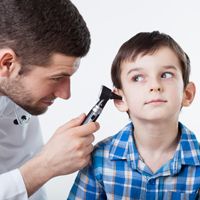Current Trends in Acute Otitis Media
Researchers suggest that acute otitis media rates during a baby’s first year have declined in recent years.

Researchers from the University of Texas Medical Branch (UTMB) at Galveston suggest that acute otitis media rates during a baby’s first year have declined in recent years. The study findings indicate that higher rates of breastfeeding, vaccination use, and lower smoking rates may be major contributors.
Published in the April 2016 issue of Pediatrics, the study found that ear infection rates decreased significantly between the late 1980s to 1990s and 2008 to 2014, from 18% to 6% in 3-month-olds, from 39% to 23% in 6-month-olds, and from 62% to 46% in 1-year-olds.
For the study, Tasnee Chonmaitree, MD, a professor of Pediatrics in the division of Infectious Diseases and Immunology at UTMB, and colleagues enrolled 367 healthy infants from near birth and followed them to their first episode of AOM, up to 12 months of age, from October 2008 to March 2014. Data were collected on family history of ear infections, cigarette smoke exposure, and breast versus formula feeding.
Additionally, nasopharyngeal specimens were collected at monthly intervals (months 1-6, 9) and during viral upper respiratory tract infection (URI) episodes for bacterial culture and viral polymerase chain reaction studies. Parents were asked to notify the investigators whenever their baby showed signs of acute otitis media or URI, upon which a study physician saw the baby within 5 days.
“We clearly showed that frequent upper respiratory infections, carriage of bacteria in the nose, and lack of breastfeeding are major risk factors for ear infections,” said Chonmaitree. “Prolonged breastfeeding was associated with significant reductions in both colds and ear infections, which is a common complication of the cold. It is likely that medical interventions in the past few decades, such as the use of pneumonia and flu vaccines and decreased smoking helped reduce ear infection incidences.”
Unfortunately, nearly half of infants in the study still experienced acute otitis media by age 1 year. In fact, 887 upper respiratory infections were recorded in 305 infants, and 180 acute otitis media episodes were documented in 143 infants. Infants with acute otitis media had 4.7 upper respiratory tract infections per child-year, whereas those without acute otitis media have 2.3 upper respiratory tract infections. When compared with infants without acute otitis media, those with it had significantly higher rates of pathogenic bacterial colonization.
The study authors concluded that bacterial-viral “interactions may play a significant role in acute otitis media pathogenesis and deserve further investigation.”